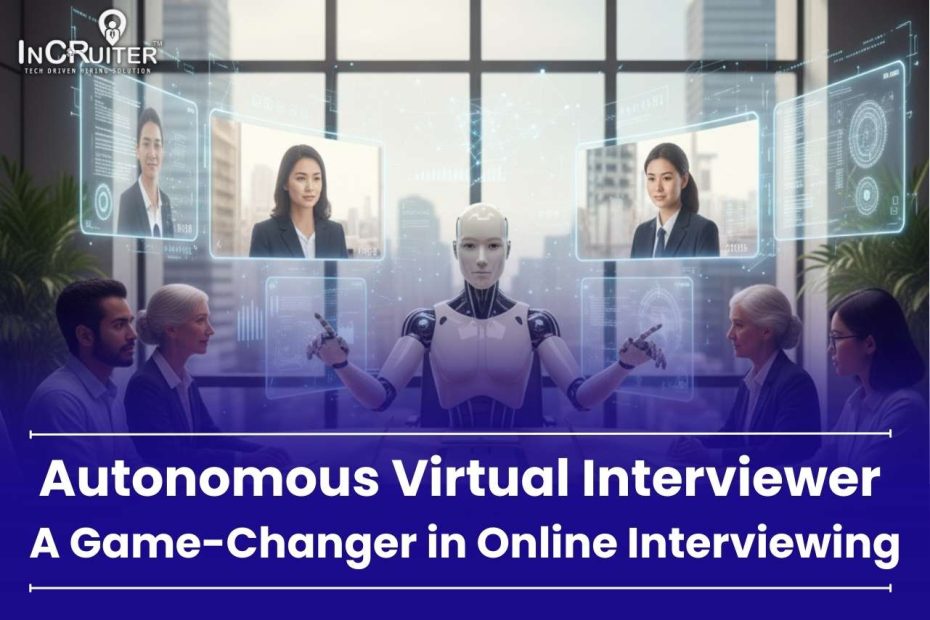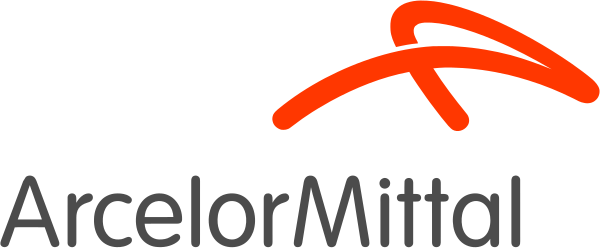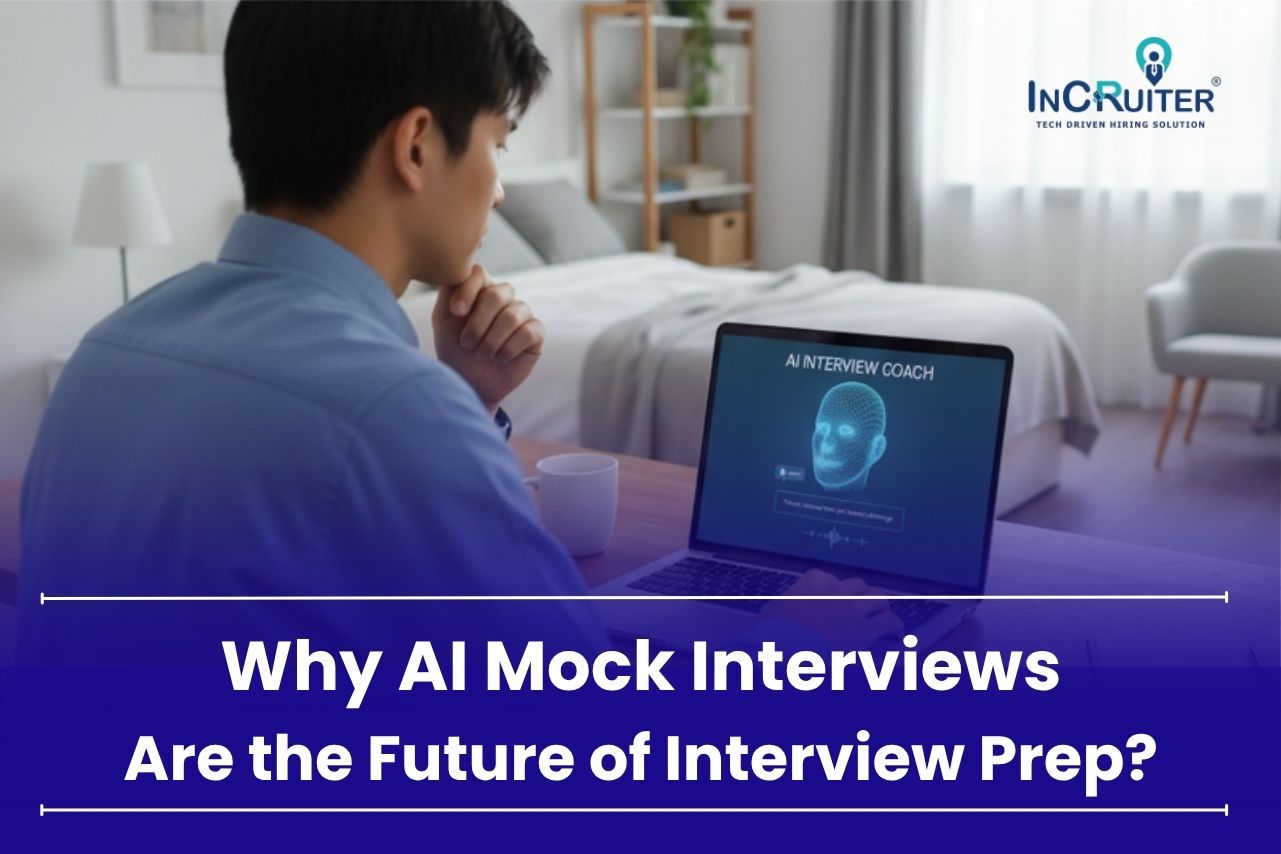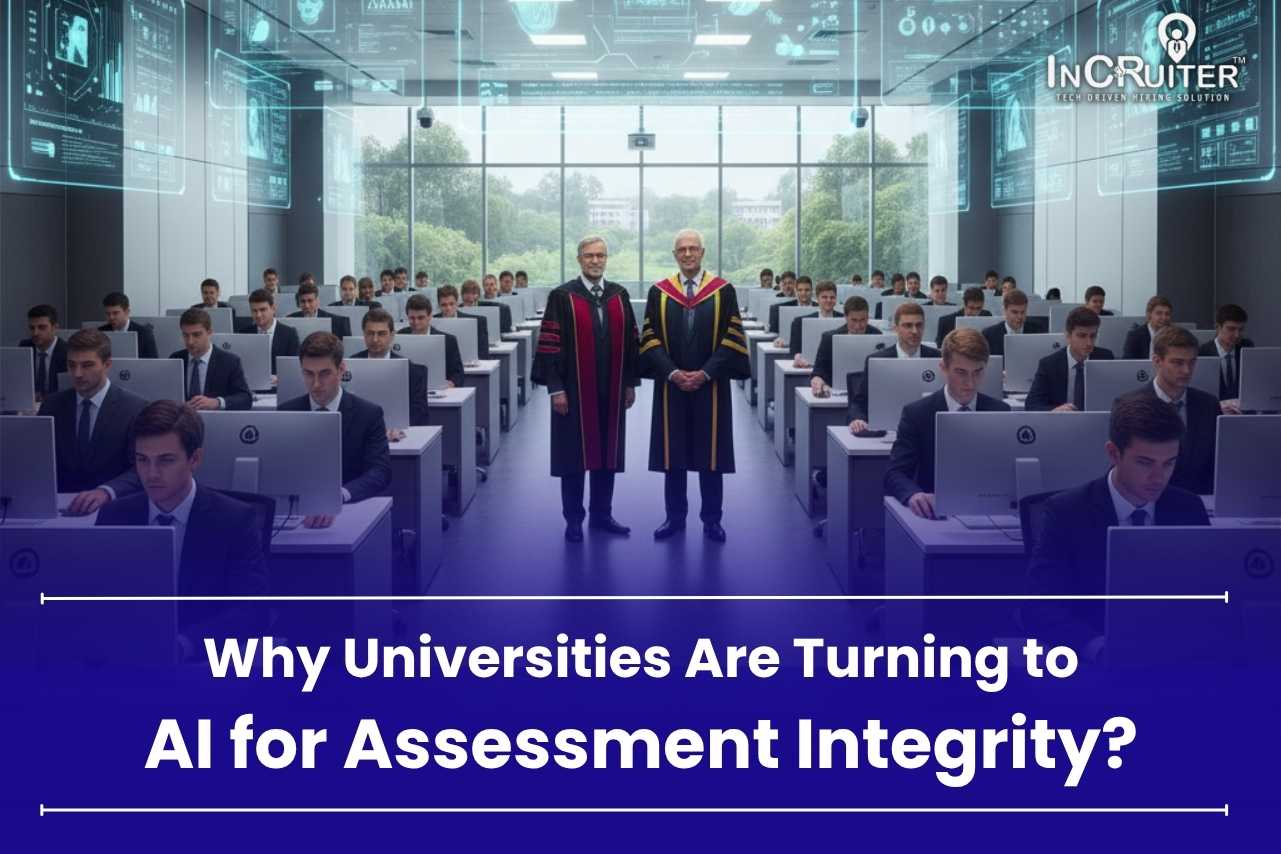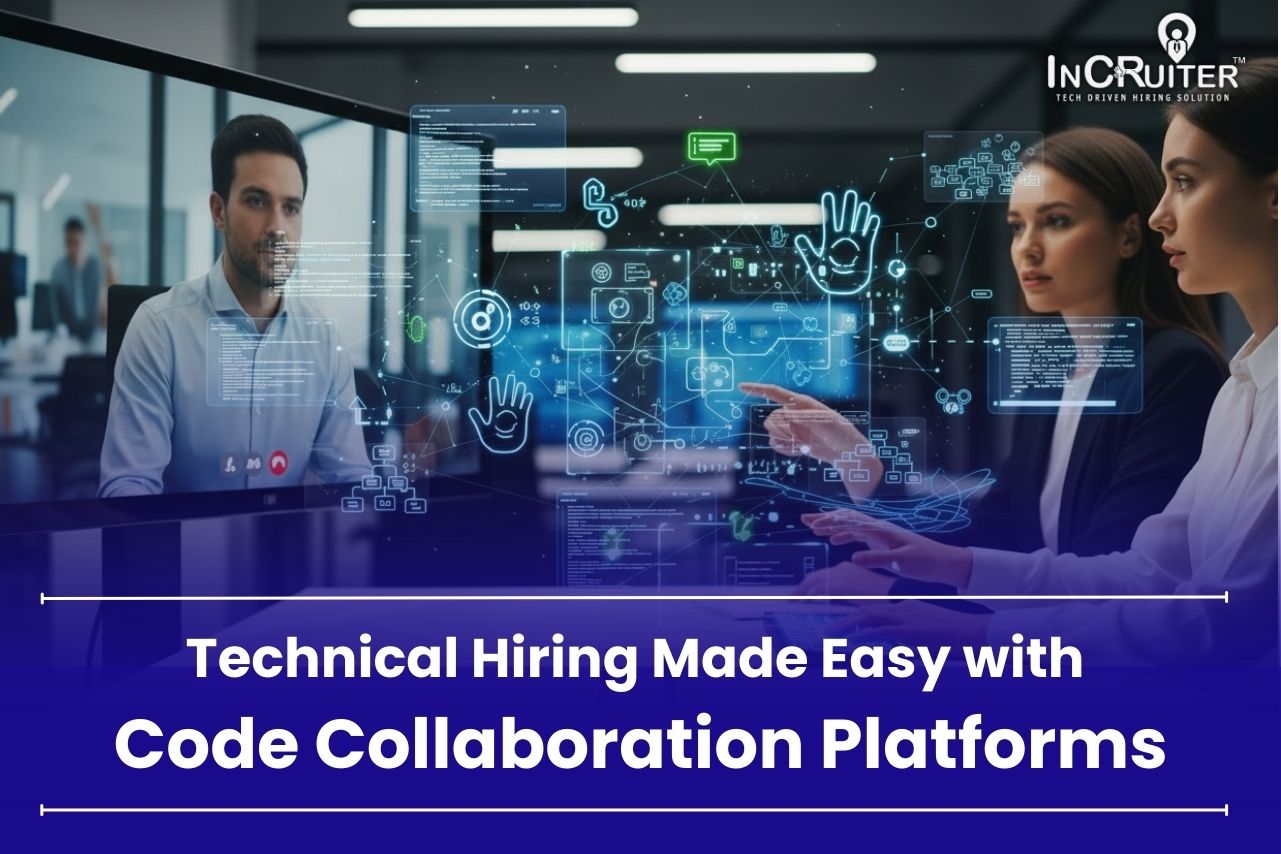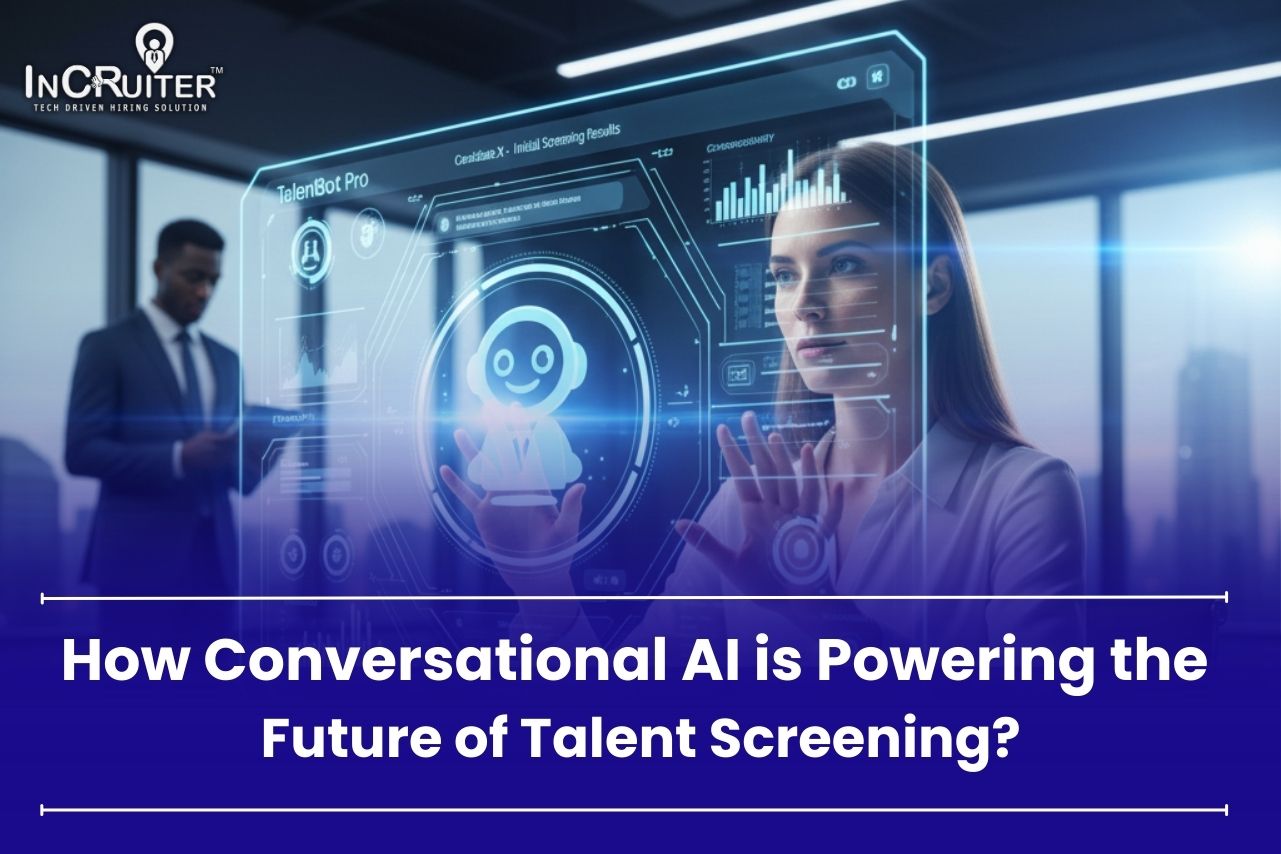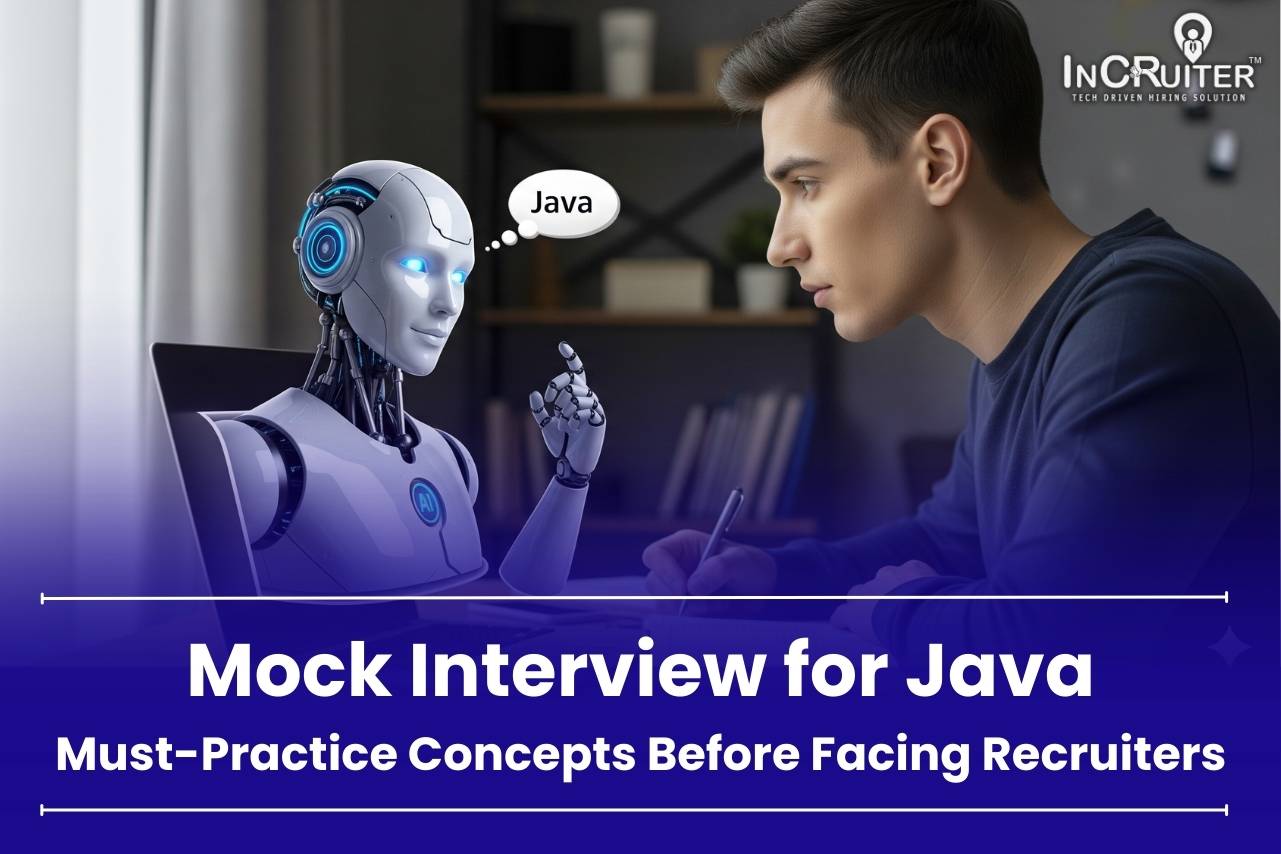Hiring feels stuck. Teams keep repeating early screenings, run into timing clashes, and get tired fast. Review standards also change from person to person. All of this drags hiring, irritates applicants, and eats up energy. When speed and fairness matter more than ever, old ways just don’t keep up anymore. That’s where Autonomous Virtual Interviewers come in. They take care of the early rounds, keep things steady, and make the process smoother for everyone.
These tools are changing how hiring works, not with fancy extras, but by making the basics better. This article walks through how they help, what’s tricky, and where it’s all headed.
What is an Autonomous Virtual Interviewer (AVI)?
An Autonomous Virtual Interviewer (AVI) is an AI-powered automated system that conducts, assesses, and evaluates applicants’ on communication, technical, coding, and incognito skills without a human being present in real-time. It’s a significant revolution from traditional one-way video interviews to completely autonomous interviews. Using AVI means using an analogy like a self-driving car for recruitment.
The Core Promise: Why Autonomous Virtual Interviewer (AVI) is a “Game-Changer”?
Modern hiring demands speed, fairness, and intelligent automation. An autonomous virtual interviewer powered by AI interview software is redefining the process by blending intelligence with automation. It supports recruitment strategies using AI power where efficiency and accuracy matter most.
Here’s why it’s a game-changer:
Scalability
The self-driven AI interview platform can screen 1000’s of job seekers’ eligibility simultaneously, running 24/7 without scheduling delays, satisfying sudden surge requirements of hiring new team members. This level of recruitment automation speeds up high-volume hiring necessities and keeps the talent pool moving quickly.
Consistency
An AI talent screening tool enforces structured questions, rubrics, and scoring across all applicants. Models apply the same criteria every time, reduce bias in hiring, and generate audit logs. With ATS integration, versioned question sets, and calibration on outcomes, decisions are reproducible, explainable, and compliant, with human review for edge cases.
Flexibility
AVI adapts to diverse recruitment needs, whether AI-powered interviews in chat, phone, or video. From pre-employment video interviews to advanced role-specific coding assessments, this automated interview software fits seamlessly into any hiring workflow.
Technical Breakdown OF Autonomous Virtual Interviewer
Behind the scenes, autonomous interviewers rely on a blend of AI technologies working in tandem:
Input Capture Layer
The whole interviewing process starts with something that captures the candidate’s answer to questions asked by Conversational AI. An Automatic Speech Recognition (ASR) tool listens and turns those spoken words into a plain or understandable transcript.
At the same time, it also checks metadata such as how clearly applicants speak, how fast they talk, and what kind of words they use while conversing. While this happens, a Computer Vision Technology (CVT) processes candidates in a live video call interview, looking at small things like eye direction, body position, and signs of stress.
Processing and Understanding Layer
Once all the speaking and video call parts are completed, the system automatically starts interpreting raw recorded data. A Natural Language Processing (NLP) checks the written text. It breaks down the sentences, picks out the job-related words, and checks if the answer sounds Happy, Worried, or Neutral.
It then matches those answers with role-specific requirements. A Conversational AI-powered adaptive intelligence engine steps in to ask a follow-up question. It doesn’t repeat the same thing every time. It changes depending on what the person just said. This keeps the interview interaction like a real human interviewer. Over time, the system learns from how people reply and improves its way of asking.
Evaluation and Scoring Layer
Now comes the part where the system checks how good the answers are. It uses intelligent, machine learning algorithms to analyze linguistic complexity, semantic relevance, prosodic features, and visual cues captured. These AI interview tools compare the answer with past records of successful candidates.
After that, it gives scores to each answer based on how well it fits the job. What makes this step better is that the tool keeps learning. When companies hire someone, whether they do well or not, the system remembers. This way, the tool slowly becomes better and fairer with its scoring.
Analytics and Optimization Layer
Apart from scoring one person, the AVI also looks at bigger patterns. It collects data from thousands of interviews and finds common things. For example, it can tell which questions don’t work well or where most people get stuck.
It can also find how candidates perform in different job roles. All this is shown on recruiter dashboards. This helps them decide what needs to change, what works best, and where they can save time in the whole hiring cycle.
Integration and Compliance Layer
To use this AVI in a company, it needs to be incorporated into the company’s ecosystem. It connects easily through standard tech links. Once done, reports, scores, and interview notes move straight into the company’s Applicant Tracking Systems (ATS) and HR Information Systems (HRIS).
The system also keeps all data safe using security methods. It follows the rules set by different regions so that everything stays legal. It also keeps track of what happens during each interview. This way, everything stays fair.
End-to-End Workflow
To put it all together in one centralized system, here’s how it works: First, it listens and watches the candidate. Then, it reads the answers. After that, it scores those replies. Next, it looks at large sets of data to improve the whole process.
Finally, it pushes the results into the hiring tools such as ATS. This setup helps teams run smoother interviews, ask better questions, and make fairer choices without doing everything by hand.
Autonomous Virtual Interviewer: Unpacking the Benefits for All Stakeholders
For Employers: The Business Case for Automation
Takes Load Off the Team
Recruiters don’t need to repeat the same calls over and over anymore. The virtual interview system handles the first steps. The internal team of the company can now use their time for final rounds or to plan better ways to hire. This also stops them from feeling too tired or stretched every day.
Manages Hiring Rush with Ease
During bulk hiring like campus drives or seasonal sales peaks, the recruitment process can go out of hand. Too many interviews at once break down the entire recruitment strategy. But the automated AI interviewer runs tons of interviews at the same time. No extra staff is needed to conduct interviews. The company can quickly fill roles without any stress or delay for the hiring team or the people applying.
Stops Interviewer Fatigue
When recruiters sit through too many early interviews, they feel drained. Tired minds lead to fast decisions that are not always right. With early steps done by the auto-run interview tool, the team stays fresh. They can give more time and attention to the last few stages. This keeps their focus sharp, and results are steady across the hiring time frame.
No More Scheduling Mess
Setting up an interview time slot manually is hard work. It takes days of emails, calls, and rescheduling changes. With the self-driven, fully automated interview tool, applicants do their interviews when they want. No need for back-and-forth or rescheduling. The hiring process moves without any delays from people waiting on calendars.
Maintains Interview Quality 24×7
Interviewers are human. Some days are good, others not so much. But the AI interviewer gives the same test each time. It doesn’t depend on mood or energy. Companies that hire across the world like this because everyone gets the same questions, no matter where or when they apply.
Shortens Feedback Loops
In normal hiring, feedback takes time. Every interviewer writes notes, then shares them later. With the AI interview solution, reports are ready right after the interview session ends. Hiring managers get AI scores and useful points on candidate skills at once. They can skim through quickly and make offers before others do.
Provides Audit-Ready Documentation
Every interview is automatically recorded and saved in the form of an audio/video; the system also generates a transcript. If someone ever asks questions about the process, there’s proof. This is helpful for companies in sectors like banking or health, where rules must be followed closely. These records give them peace of mind and fewer chances of issues later.
For Candidates: A More Accessible and Equitable Experience
Provides Flexibility to Interview Anytime
People often apply for jobs while managing many things, such as studies, job shifts, and home duties. With Automated video interview software, they can give their interview at any hour that works for them. There’s no rush or clash with their routine. They feel less nervous and more in charge, which helps them do better during the process.
Interviewing in Non-Judgmental Space
Many people get tense when an interviewer watches them live. It affects how applicants speak or act. AI Video Interviewer lets the candidate give an interview alone, without a face staring back or a voice reacting. This gives them a quiet space where they can speak freely, share ideas well, and show what they really know.
Faster Progress in Recruitment
Often, job seekers wait days just to hear back after applying. An autonomous video interview platform integrated with an interview scheduling tool cuts out slow back-and-forth calls. It helps them reach the interview stage faster. They don’t lose hope or interest. Staying active in the process keeps their energy up and shows the company they care.
Equal Access to Global Roles
Some people live far from major cities in their own countries or even in other countries. An AI interviewer lets them apply for jobs outside their area without needing to travel. They don’t worry about flight costs or time zone problems. It opens up chances where only skill counts, not where they are based.
Improves Candidate Experience
An AI-driven interview tool doesn’t feel dull like long forms. It also doesn’t come with slow callbacks. Instead, questions match what the job needs. The whole experience feels quick and fair. People feel they’re being treated well. That leaves a strong impression and makes them respect the company more.
Addressing the Challenges in the Adaptation of Autonomous AI Interviewers
Candidate Resistance to AI-Driven Interviews
Many people wonder if a machine can truly spot what makes them special. They think it might miss their soft skills or judge them wrongly. Some also fear it may crash or glitch midway. These doubts keep them from trying unless someone clearly explains how the system is fair, quick, and open.
Threat of Dehumanization of the Interview
Most people want to feel heard during an interview. They look for small signs of eye contact, smiles, or a pause to think. When everything feels too robotic, the whole process turns cold. If no human checks or balances are added, the experience can feel flat and may lead to trust issues.
How to Integrate Autonomous AI Virtual Interviewer into Hiring Strategy?
1. Hiring Team Sets the Rules
The person in charge picks the job title and adds the skills needed for the empty job role. Based on this, the system builds or presets question sets using smart built-in AI interview tools. It chooses what to ask based on the job, like coding tasks, speaking ability, or subject knowledge, depending on what the role is about.
2. Candidate Gets a Secure Interview Link
After everything is ready, each applicant receives a separate secure interview link. They can open it when they want, no need to match time with anyone else. Before the interview begins, the AI interview system gives a clear guide on how the whole process works, so there’s no confusion.
3. Interview Happens Without Human Involvement
A Conversational AI interviewer means an AI mascot shows up on screen and asks one question at a time. The candidate answers by talking or typing. As they respond, the tool automatically follows up with a question analyzing the candidate’s response. This way, the system digs deeper into the candidate’s technical, coding, communication, and incognito skills.
4. System Prepares a Score-Based Report
Once the interview session ends, the system quickly creates a full feedback report. It gives points based on how well the person spoke, answered questions, and stayed confident. The hiring team can go through the feedback report and even watch the video to decide who should move to the next round.
The Future of Autonomous Interviewing Technology
Interviews that run on their own are getting better with new tech. Things like virtual headsets, smart thinking machines, and even special ways to lock and check records are helping companies choose people in a better and fairer way. These updates are shaping how hiring may work soon, faster, easier, and fairer for all.
AR/VR Immersive Simulations
These tools place people in made-up office scenes. Candidates can show how they react and solve problems in real-like jobs. It helps hiring teams see how well someone might do the actual job, not just talk about it.
Augmented AI Decision Support
AI now assists hiring teams with helpful insights, but humans still make the last call. This hybrid setup brings balance. It cuts bias, adds honesty, and builds more trust in the tech running behind.
Blockchain for Credential Verification
Blockchain is a future-proof technology to provide the recruitment industry with an unbreakable security layer. Potentially, all future ATS will use this technology to store data related to recruitment.
Emotion AI for Soft Skills Assessment
Emotion recognition models analyze micro-expressions, tone, and stress indicators. Recruiters gain deeper insights into communication style, empathy, and adaptability skills often overlooked in traditional assessments.
Generative AI Interview Customization
Adaptive generative models design unique interview questions for each role, based on evolving job descriptions. This ensures alignment with employer needs and reduces reliance on outdated question banks.
Multilingual NLP Expansion
Advanced NLP models break language barriers, allowing interviews in multiple languages with real-time translation. This opens international opportunities and ensures fair evaluation for non-native speakers.
Conclusion
Autonomous Virtual Interviewers are no longer experimental add-ons; they are establishing a new standard in recruitment. By saving internal bandwidth, ensuring fairness, and scaling with demand, AVIs prove they are far more than a passing trend.
Their rise reflects the inevitable evolution of hiring toward processes that are faster, more consistent, and equitable for both employers and candidates. Intelligent automation does not replace the human element; it refines it, removing inefficiencies and bias.
The future of work will be defined by such technologies, where smarter systems create stronger opportunities and better hiring outcomes across the globe. Partner with InCruiter today to experience the future of intelligent interviewing.






